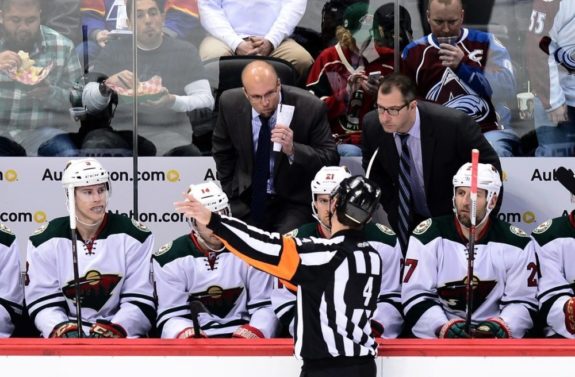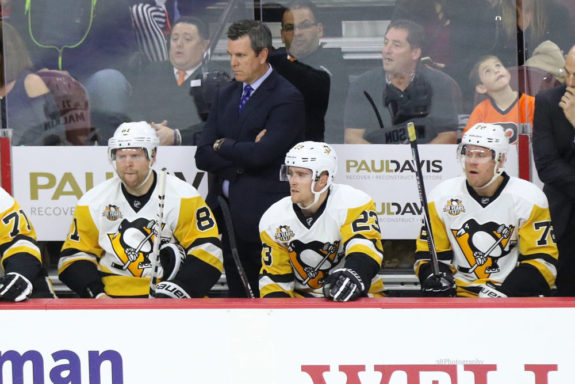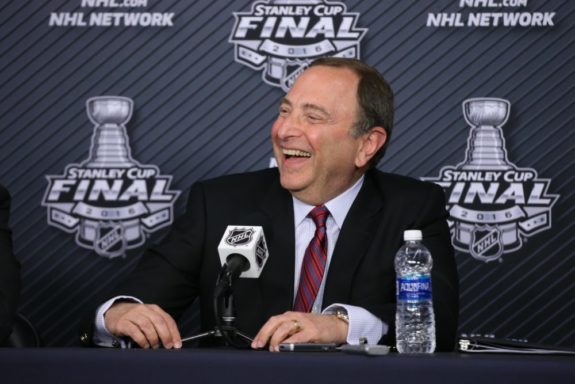Back in May, I proposed four simple rule changes to help “fix” the NHL. Among them, naturally, was a series of tweaks to adjust the league’s coach-controlled offside challenge.
I hate the offside challenge, and no, I don’t think “hate” is too strong a word. I detest the fact that the league enables coaches to wield that degree of power in the first place. If a zone entry warrants further review, I would much rather the NHL Situation Room call for it. How this is left to the discretion of the club that just conceded the goal is beyond me.
I also can’t stand the lack of context: how a team can have a goal taken off the board because a player’s skate was one inch off the ice 20 seconds before the goal was scored. And I loathe how it destroys the flow of the game. With reviews lasting upwards of five (and sometimes TEN) minutes, the sport fails to resemble itself.

Naturally, it’s important to make the right call. I’m not advocating for human error to run rampant. But something needed to be done — more than just the loss of a timeout — to curb the use of the offside challenge.
Though the brunt of my grievances remains intact, there is a light at the end of the tunnel. With the league’s institution of a two-minute minor penalty for a failed offside challenge, there is now at least some form of repercussion for instigating this abomination.
Challenge Usage, A Retrospective
Since its inception prior to the 2015-16 season, we’ve seen coaches around the league become increasingly liberal in using the challenge. What began in earnest as a way for coaches to rectify a blown call progressively devolved into a consequence-free, nothing-to-lose Hail Mary.
As the sport moves away from the dump-and-chase and free-flowing, wide open hockey of yore to a system of team defense, zone entries are getting tighter and tighter. It’s not difficult to stay onside when a team is merely gaining the red line, chipping the puck down the ice and chasing after it. It was similarly easy to stay onside back in the 70s and 80s when most forwards were allergic to backchecking.

Zone entries today are often contested and, as such, the margin of error is virtually negligible. This has played the most significant role in the abundance of offside challenges. It’s not so much that the challenging coach witnessed an offside-entry, but rather that the play in question was so close that there’s a CHANCE it was offside.
In big moments or on the biggest stage, a coach is not performing his due diligence if he doesn’t force the officials to take another look, just in case, without any repercussions. That’s not the spirit of the rule, nor is it the intended usage. Something needed to change.
The Future of the Challenge
The introduction of consequences for a failed challenge, though not a cure-all, will at least partially right the ship.
Let’s use Game 1 of last season’s Stanley Cup Final as an example of how things will change:
Plays such as this will see a drastic reduction in challenges moving forward.
Less than eight minutes had transpired in the first game of a best-of-seven playoff series, specifically, the Stanley Cup Final. The score is tied at zero. There is no way that, from his vantage point, Mike Sullivan knew this play was offside. But he challenged the play anyway, because why wouldn’t he?
Had the two-minute minor been in place at the time, Sullivan would certainly not have challenged the entry. Throwing caution to the wind and challenging such a close play, could leave his team down a goal AND down a man for two minutes. In those circumstances, it would have been an extremely unnecessary risk.

This bodes well for the future of the challenge. Teams engaged in a close match (tie game, one-goal deficit) will be increasingly reluctant to roll the dice on a close call with lots of hockey yet to be played. As such, the scenarios in which the challenge is employed will essentially be boiled down to egregious errors, close games late in the third period, and when a contest is verging on getting out of hand for the challenging team.
The first scenario is the intended usage. In the second, the importance of making the correct ruling is at its peak. In the final instance, the game is lopsided, and as such, the cost of disrupting the flow of the game is mitigated.
Bettman’s Betterment
For years, Gary Bettman has been accused of being a tone-deaf and inept commissioner. Be it in the form of the implementation and maintenance of necessary rule changes, marketing the sport or the three work-stoppages that have occurred on his watch, the man has taken his fair share of criticism.

However, the implementation of the failed-challenge penalty is a big step forward for the commissioner and his league. It serves as a concession that a policy carried unintended consequences and thus required amending; something the obstinate Bettman has seldom done.
I can’t speak to how much influence owners and coaches imparted on the rule change. What I can speak to, however, was the growing PR nightmare stemming from fans outraged by questionable goal removals.
To Bettman, fans are consumers. The league’s ongoing efforts to increase scoring is one of the few instances of him catering to fans. Most coaches loathe watching their team embroiled in high-scoring affairs. As such, the quest to increase goal scoring is undeniably consumer-oriented.

This plays a part in the implementation of the new failed-challenge penalty. Most fans want to see more goals. This is a way to give consumers what they want while simultaneously amending a clunky lightning rod for criticism. I won’t go so far as to say that Bettman is turning over a new leaf. But like the rule change itself, it’s a step in the right direction.